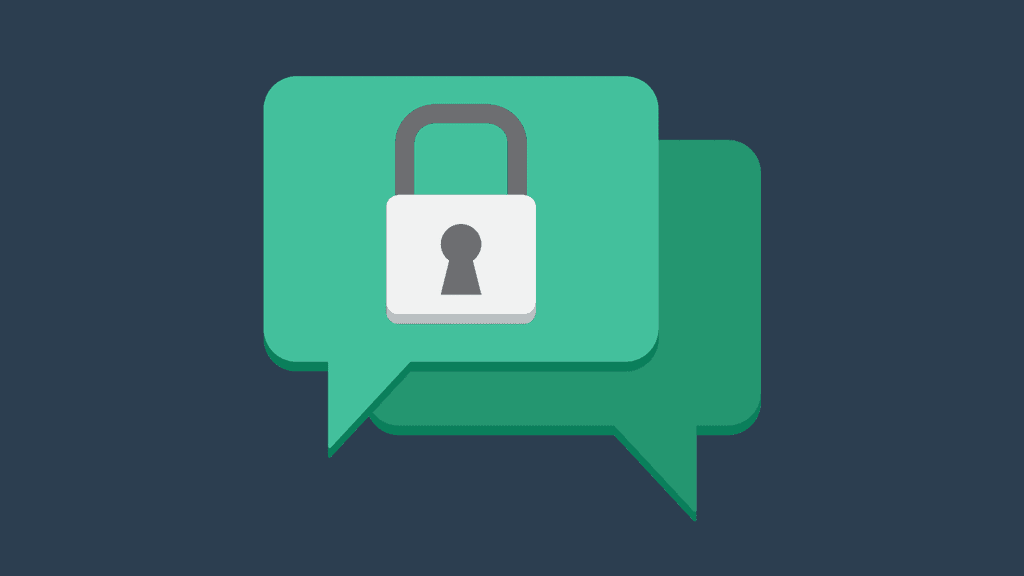Secure Text Messaging: Protected communication in healthcare

 In recent years, the healthcare sector has experienced a significant surge in adopting digital technologies to enhance patient care and streamline operational processes. Among these technological advancements, secure text messaging has emerged as a potent tool, offering healthcare providers the means to communicate more efficiently and effectively, all while ensuring the utmost confidentiality and security of patient information.
In recent years, the healthcare sector has experienced a significant surge in adopting digital technologies to enhance patient care and streamline operational processes. Among these technological advancements, secure text messaging has emerged as a potent tool, offering healthcare providers the means to communicate more efficiently and effectively, all while ensuring the utmost confidentiality and security of patient information.
Secure text messaging represents a form of instant communication fortified with encryption and other robust security measures tailored to uphold patient data’s sanctity. Unlike conventional SMS texting, secure messaging platforms are meticulously designed to meet the stringent regulatory requirements of the healthcare industry, such as compliance with the Health Insurance Portability and Accountability Act (HIPAA) in the United States.
Understanding Encrypted Messaging in Healthcare
Encrypted messaging in the healthcare domain is a method of fortifying the content of electronic messages by converting them into a code that is exceptionally difficult, if not impossible, to decipher without the correct decryption key. This technology leverages advanced encryption algorithms to jumble the content of messages, rendering them unintelligible to anyone lacking the appropriate authorization.
Here is a simplified overview of how encrypted messaging operates within the healthcare context:
- Encryption: When healthcare professionals employ encrypted messaging applications to send messages, the text, images, or patient information files transform a complex code.
- Transmission: This encrypted data is subsequently transmitted to the intended recipient, often utilizing secure healthcare networks or dedicated communication channels.
- Decryption: Only the authorized recipient, typically a healthcare provider or administrator with the decryption key, can decode the message and access its original content, frequently containing sensitive patient data.
The Advantages of Secure Text Messaging in Healthcare
Several compelling reasons underscore the pivotal role of secure text messaging in healthcare:
1. Improved Collaboration and Coordination
Secure text messaging platforms empower healthcare providers to communicate in real-time, transcending geographical barriers. This proves especially invaluable during emergencies, where swift decision-making and seamless coordination among care team members can be life-saving.
Moreover, secure text messaging can significantly reduce communication errors, improving patient information’s accuracy and comprehensiveness. By centralizing message exchanges and patient data within a single platform, healthcare providers can circumvent confusion and miscommunication often associated with multiple communication channels or systems.
2. Enhanced Patient Privacy and Security
Preserving patient privacy and security is a paramount concern in healthcare, and secure text messaging plays a pivotal role in upholding these principles. Secure messaging platforms employ end-to-end encryption, ensuring that messages are scrambled and can only be deciphered by their intended recipients.
Additionally, secure messaging platforms frequently offer supplementary security features, including robust authentication mechanisms, access controls, and audit trails that meticulously track who has accessed and shared patient information.
3. Improved Efficiency and Productivity
Secure text messaging can translate into substantial time savings and heightened productivity for healthcare providers. With the ability to send and receive messages instantaneously, care team members can stay abreast of critical patient information and communicate more efficiently.
Furthermore, secure messaging platforms often include features that further streamline workflows, such as attaching files, images, and videos to messages or seamlessly integrating with electronic health records (EHRs) and other clinical systems.
Challenges and Considerations
While secure text messaging offers many advantages, its implementation and usage within healthcare organizations must be thoughtfully considered. Key challenges and considerations encompass:
- Ensuring that all care team members receive adequate training on the secure and compliant use of messaging platforms.
- Establishing policies and procedures governing the appropriate utilization of secure messaging, delineating when it is permissible to employ messaging for patient-related communication.
- Effectively integrating secure messaging with other clinical systems and workflows to ensure the accuracy and currency of patient information.
- Thoughtfully selecting a secure messaging platform that aligns with the organization’s specific needs and requirements while facilitating seamless integration with other clinical systems and workflows.
In summary, secure text messaging has risen as a pivotal tool within the healthcare landscape, offering a potent means of enhancing communication, collaboration, and patient care, all while preserving patient privacy and security. As the healthcare sector continues to evolve and embrace digital technologies, secure messaging is poised to occupy an increasingly prominent role in the healthcare technology arsenal, fostering improved patient outcomes and a more secure healthcare ecosystem.
